Picture yourself solving critical challenges in natural, built, and virtual environments. That’s the kind of future you can work towards at Texas A&M University’s College of Architecture. In 2024, 416 graduate students took this path; but what could it mean for you?

Picture yourself solving critical challenges in natural, built, and virtual environments. That’s the kind of future you can work towards at Texas A&M University’s College of Architecture. In 2024, 416 graduate students took this path; but what could it mean for you?

#1
#1 in Texas
#11
among public universities
#28
nationwide
Your future starts here
Since 1876, Texas A&M University has grown from the state’s first public college into a Tier 1 research university that equips future leaders with the knowledge and skills to change the world.
“I would encourage every applicant to embrace the opportunities this scholarship provides. At BISP, we are looking for students who are not only academically capable but also eager to contribute to our diverse and dynamic school community. The Dr. Arthit World Scholarship is a stepping stone to something much greater — it’s the start of a journey toward making an impact in the world.” - Simon Meredith, Head of School.
527,468 members strong
As part of the Aggie Network, you’ll gain access to scholarships, student organisations, and academic excellence that set the stage for your future success.
A campus designed for success
From the Memorial Student Centre to makerspaces and world-class libraries, Texas A&M has everything you need to make the most of your college experience.
A place to belong
On one of the friendliest campuses around, you'll find a welcoming community, over 1,000 student organisations, and countless ways to lead, connect, and explore. All in a safe, affordable city that feels like home.
No limit to innovation
Few universities do it all. Texas A&M is one of 24 institutions with land, sea, and space-grant status. Here, undergraduate and graduate researchers work alongside industry leaders and renowned faculty to advance research.
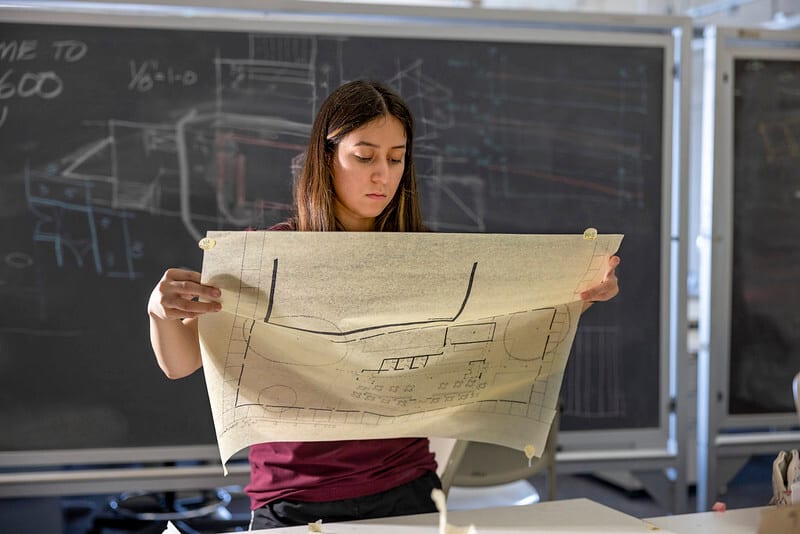
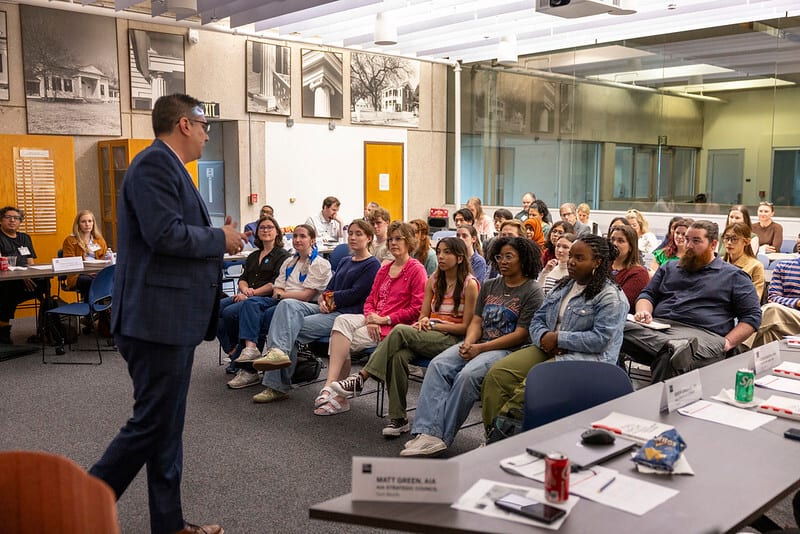
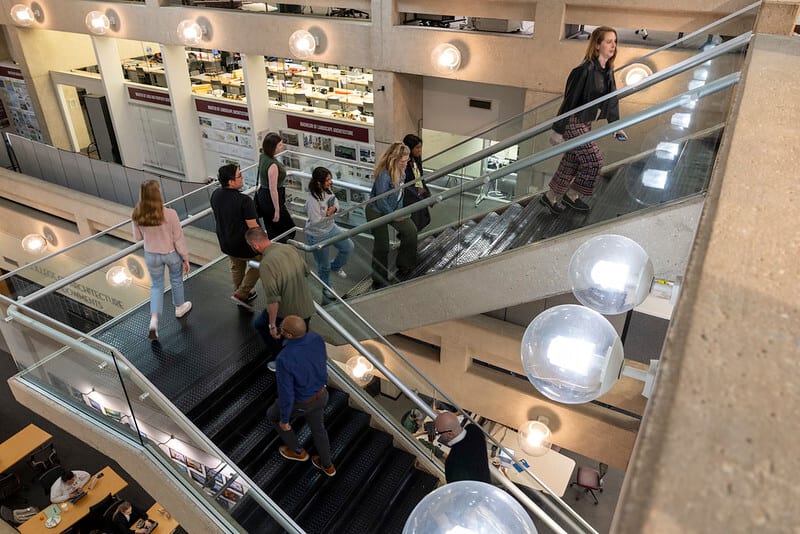
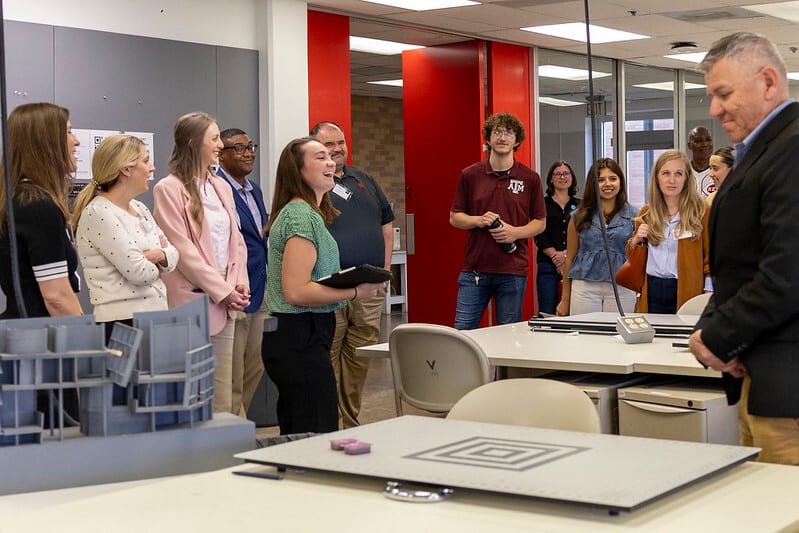
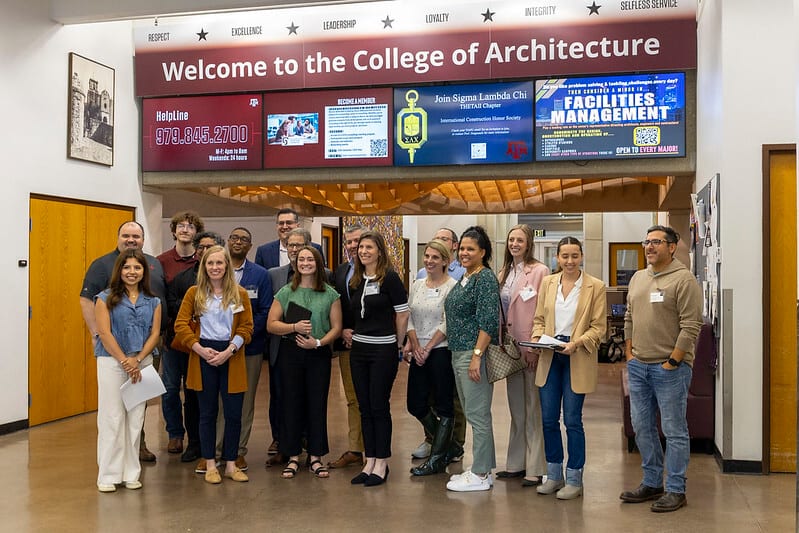
Big opportunities, small college experience
Founded in 1906 with just 10 students, the College of Architecture is now a leader in architectural education. With architecture, landscape architecture, urban planning, and construction science programmes, it combines the best of both worlds: a close, supportive academic community and the vast resources of one of the nation’s largest architecture colleges.
For example, the college is home to makerspaces featuring a fully equipped wood shop, a large-scale fabrication site, and state-of-the-art 3D printing lab. Each of its programme’s Industry Advisory Council links you with lecture series, internships, and career fairs that draw in 400 firms.
#5
for Architecture Schools Most Hired from by Firms (DesignIntelligence.com)
40%
of graduate students are international


of students scored above the world average
76%
full IBDP pass rate
93%
students were awarded 35+ points
40%
students were awarded 35+ points
40%
Master of Architecture
At Texas A&M, the Master of Architecture helps you become a licensed architect ready to design with impact. You’ll explore the intersection of nature, technology, and society — developing a design philosophy that prioritises resilience, inclusivity, and sustainability. It all leads to your final design study project, where you’ll bring your ideas to life and show how architecture can create spaces that are functional, inclusive, and future proof.
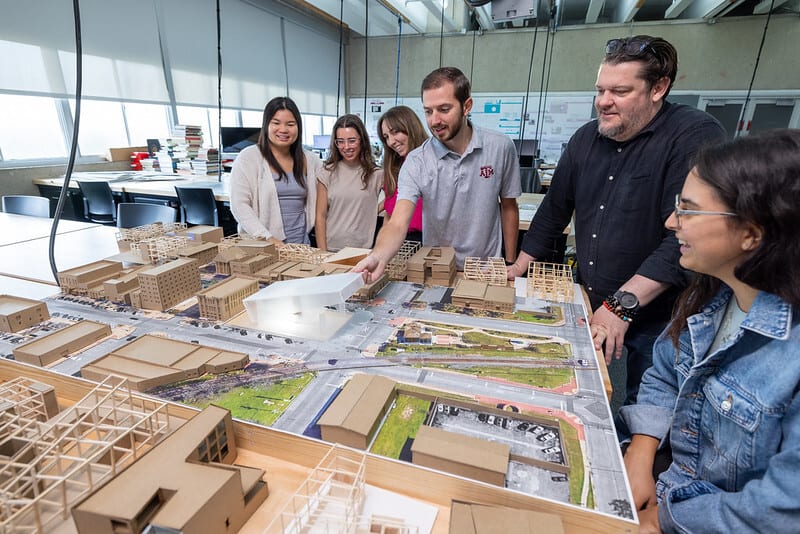
Master of Science in Architecture
The Master of Science in Architecture is a multidisciplinary, research-oriented degree programme. Open to both aspiring scholars and practicing professionals, this non-professional degree strengthens theoretical knowledge and research capabilities in architecture. You’ll complete a combination of foundational courses and allied supporting courses and may choose between a thesis or non-thesis track.
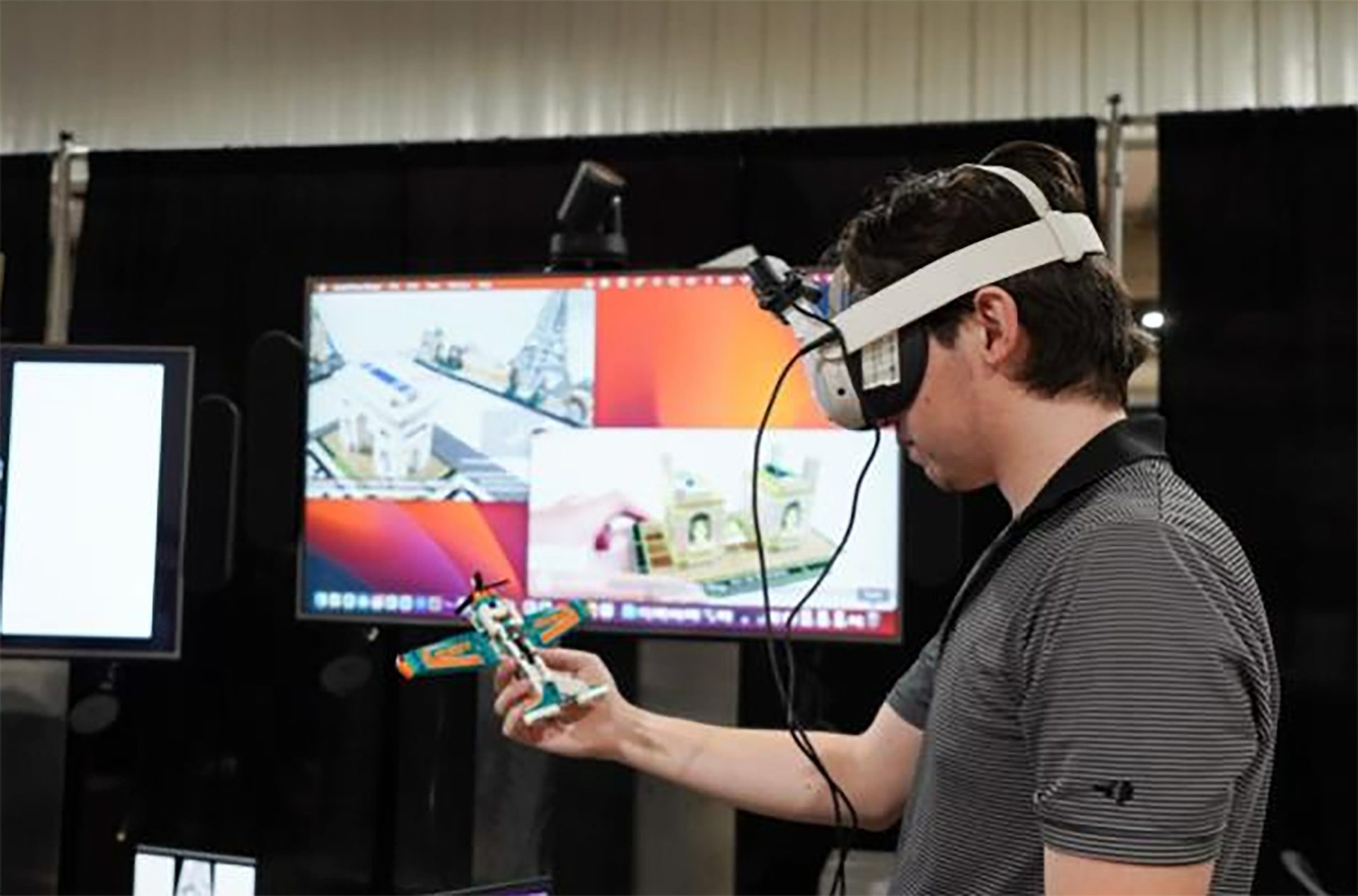
Master of Science in Construction Management

Master of Landscape Architecture (MLA)
The MLA is a STEM-designated programme recognised by the US Department of Homeland Security. Grounded in evidence-based design, it will help you assess, protect, and shape landscapes that enhance human interaction with natural and built environments.
And whether you're new to the field or have prior experience, you can choose from a two-year or three-year track to match your background and goals.
Master of Land and Property Development (MLPD)
Looking to fast-track your real estate development career? The MLPD programme combines speed, specialisation, and real-world impact for you to graduate in just 15 months. The curriculum integrates business, finance, planning, design, and construction, equipping you with the practical and strategic skills needed for success. The MLPD programme is also available online.
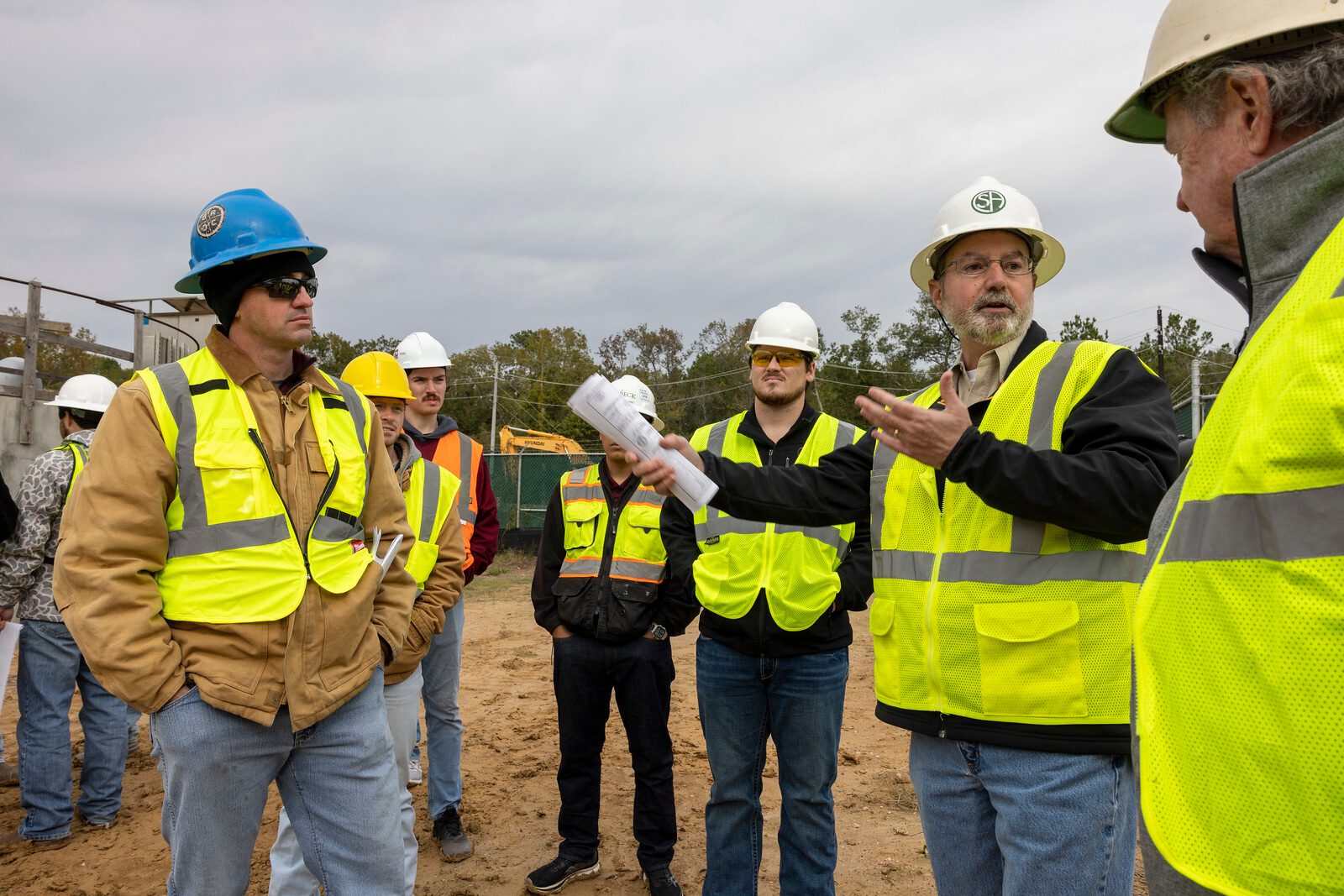
Master of Urban Planning
Since 1965, the accredited Master of Urban Planning programme has been training future leaders who shape more equitable and sustainable communities. Here, you’ll explore how cities function through technical, political, economic, and legal perspectives and gain the knowledge and tools to turn community values into ethical, actionable plans. After graduating, you’ll be ready to launch a career in public and private planning sectors or continue your studies at the doctoral level.

PhD in Architecture, Construction Science, or Urban and Regional Science
As a PhD student, you gain the skills, resources, and academic support needed to conduct impactful research. You'll collaborate with faculty to create new knowledge on how to make communities smarter, safer, healthier, and more resilient.
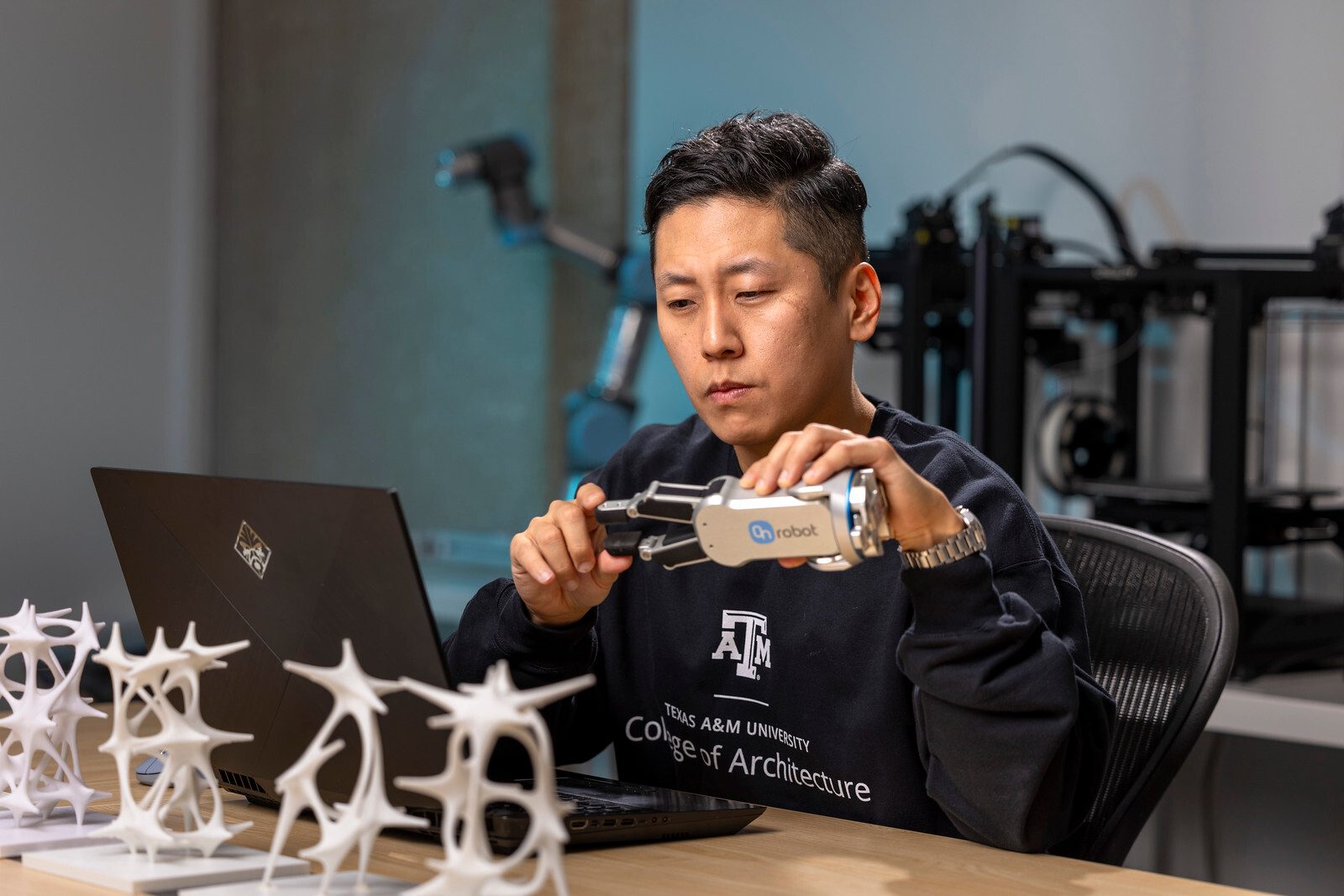
Explore other graduate programmes
Hear from the students
Hear from Dr. Arthit World Scholarship recipients
Zhenhang Cai’s research journey with the Hazard Reduction & Recovery Center (HRRC) began in 2019 when she met her advisor, Dr. Galen Newman. “He opened the door to an entirely new research world for me,” she says.
Since then, she’s thrown herself into research, including the Bonn VR Experience, the Dashboard of Galena Park Flooding and Pollution, and the Galveston Digital Twin projects. She’s also built an impressive research portfolio; she’s co-authored six journal articles, three book chapters, and a book review, and has presented at major conferences, including the Council of Educators in Landscape Architecture (CELA) and at the Superfund Research Programme (SRP) annual meetings.
Tri Hoang
Hear from Dr. Arthit World Scholarship recipients







Jaechang Ko is redefining architecture with AI. His research blends computing architectural styles with human aesthetic perception, pushing the boundaries of classification, visualisation, and generative design. Ko credits the college's specialised courses for shaping his academic growth. "They often feature deep dives into niche topics, such as advanced computational design and hands-on digital fabrication, and bring together faculty and visiting experts with real-world experience," he says.
Graduating in May 2025, Ko is ready for his next chapter as a tenure-track assistant professor at Washington State University. There, he hopes to translate his research “into practical applications, guiding future architects and designers toward data-driven, innovative practices."
Jaechang Ko,
PhD in Architecture student
Christian Martinez is a second-year Master of Architecture student combining his technical expertise and creative vision to design learning environments that inspire curiosity. His time at Texas A&M has been filled with defining moments. One of the most significant was the
"Computational Methods in Architecture" course. "It gave me the push I needed to pursue a minor in product design and digital fabrication, alongside my bachelor's degree, adding both to my resume and overall modelling and construction skillset," he said.
Another unexpected passion emerged during his master's programme: architectural photography. "The instructor's enthusiasm made the class incredibly engaging," he says. "And I now realise how valuable photography is in showcasing design."
Christian Martinez,
Master of Architecture student
Beatriz Watanabe dreams of designing spaces that enhance well-being. "After graduation, I plan to work with healthcare facilities, focusing on creating healing environments where people feel welcome and reconnected with nature," she says. “I want to leverage landscape architecture as a tool for positive change.”
Her passion for inclusive, sustainable design has been shaped by her experiences at the College of Architecture. One class stood out. “In the ‘Open Space and Land Use Planning I’ course, I explored how sustainable practices can be integrated into urban spaces while ensuring they are accessible to all,” she says.
Beatriz Watanabe,
Master of Landscape Architecture student

Zhenhang Cai’s research journey with the Hazard Reduction & Recovery Center (HRRC) began in 2019 when she met her advisor, Dr. Galen Newman. “He opened the door to an entirely new research world for me,” she says.
Since then, she’s thrown herself into research, including the Bonn VR Experience, the Dashboard of Galena Park Flooding and Pollution, and the Galveston Digital Twin projects. She’s also built an impressive research portfolio; she’s co-authored six journal articles, three book chapters, and a book review, and has presented at major conferences, including the Council of Educators in Landscape Architecture (CELA) and at the Superfund Research Programme (SRP) annual meetings.
Zhenhang Cai,
PhD in Urban and Regional Science



Jaechang Ko is redefining architecture with AI. His research blends computing architectural styles with human aesthetic perception, pushing the boundaries of classification, visualisation, and generative design. Ko credits the college's specialised courses for shaping his academic growth. "They often feature deep dives into niche topics, such as advanced computational design and hands-on digital fabrication, and bring together faculty and visiting experts with real-world experience," he says.
Graduating in May 2025, Ko is ready for his next chapter as a tenure-track assistant professor at Washington State University. There, he hopes to translate his research “into practical applications, guiding future architects and designers toward data-driven, innovative practices."
Jaechang Ko,
PhD in Architecture student
Christian Martinez is a second-year Master of Architecture student combining his technical expertise and creative vision to design learning environments that inspire curiosity. His time at Texas A&M has been filled with defining moments. One of the most significant was the
"Computational Methods in Architecture" course. "It gave me the push I needed to pursue a minor in product design and digital fabrication, alongside my bachelor's degree, adding both to my resume and overall modelling and construction skillset," he said.
Another unexpected passion emerged during his master's programme: architectural photography. "The instructor's enthusiasm made the class incredibly engaging," he says. "And I now realise how valuable photography is in showcasing design."
Christian Martinez,
Master of Architecture student
Beatriz Watanabe dreams of designing spaces that enhance well-being. "After graduation, I plan to work with healthcare facilities, focusing on creating healing environments where people feel welcome and reconnected with nature," she says. “I want to leverage landscape architecture as a tool for positive change.”
Her passion for inclusive, sustainable design has been shaped by her experiences at the College of Architecture. One class stood out. “In the ‘Open Space and Land Use Planning I’ course, I explored how sustainable practices can be integrated into urban spaces while ensuring they are accessible to all,” she says.
Beatriz Watanabe,
Master of Landscape Architecture student

Zhenhang Cai’s research journey with the Hazard Reduction & Recovery Center (HRRC) began in 2019 when she met her advisor, Dr. Galen Newman. “He opened the door to an entirely new research world for me,” she says.
Since then, she’s thrown herself into research, including the Bonn VR Experience, the Dashboard of Galena Park Flooding and Pollution, and the Galveston Digital Twin projects. She’s also built an impressive research portfolio; she’s co-authored six journal articles, three book chapters, and a book review, and has presented at major conferences, including the Council of Educators in Landscape Architecture (CELA) and at the Superfund Research Programme (SRP) annual meetings.
Zhenhang Cai,
PhD in Urban and Regional Science
An enriching experience awaits at Texas A&M University College of Architecture.


